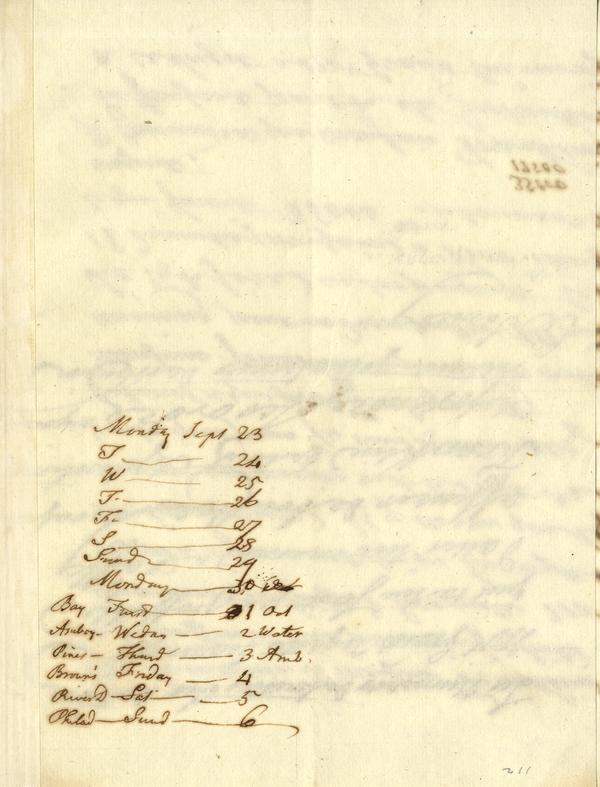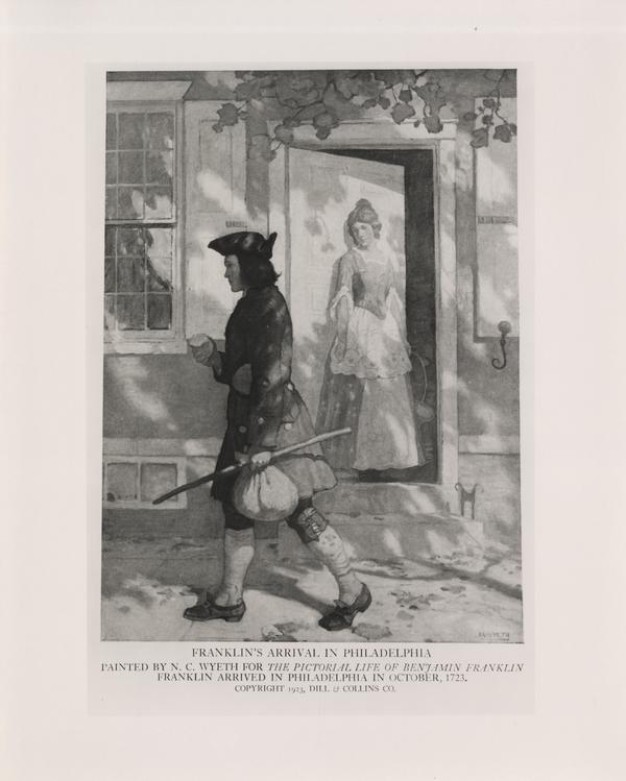Notes revealed Ben Franklin’s date of arrival in Philadelphia
Header Image: Engraving of young Ben Franklin walking down the street with rolls as Deborah observes, portrait of Deborah. APS.
The name Benjamin Franklin is nearly synonymous with Philadelphia history, but for over 250 years no one knew the exact date of Franklin's famed arrival in the city. Most historians believed that he arrived on a Sunday in October of 1723. Little did they know that, 60 years later, Franklin himself recorded the date on the reverse side of a letter on November 29, 1783.

On the reverse of this letter from Franklin’s banker, Ferdinand Grand, appears a list of dates and locations. One might assume that they relate to financial matters. This assumption would be wrong.
The letter was not unknown when Franklin scholar and editor of the Franklin Papers Claude-Anne Lopez examined it at the American Philosophical Society’s Library in 1980. However, scholars had not ascribed great importance to the memo on the reverse. Lopez noticed that the notes appeared to be a list of dates and ports that corresponded with Franklin’s trip itinerary to Philadelphia. She realized that this previously ignored memo revealed the date of Franklin’s arrival in the city.
Lopez believed that Franklin wrote the memo in a thoughtful moment as he reflected on his life during the late autumn of 1783, 60 years after his arrival in Philadelphia. The tumultuous period of the revolutionary era and its immediate aftermath was passing, his diplomatic mission was nearing an end, and the treaty of Paris had been signed two months earlier. Perhaps during a moment of quiet reflection, he had a fleeting image of how he had appeared on the day of his arrival in Philadelphia: a scruffy 17-year-old runaway, wandering down the street while munching a roll.
The day would have been memorable to him, as it was his first in a city with whose history he would become inextricably intertwined. However, it was also significant to him for another reason: one highly amused observer of the rather disheveled young man was a young woman named Deborah Read, who seven years later would become his wife.
This appeared originally as a short piece authored by Valerie-Anne Lutz in the online exhibition “Treasures of the APS” in 1999.

